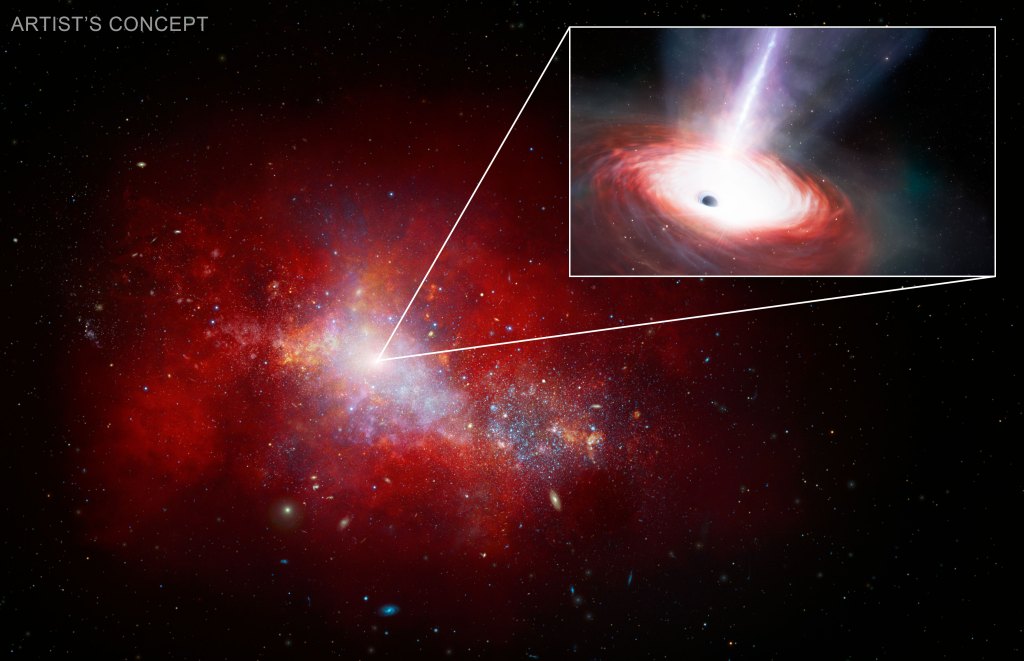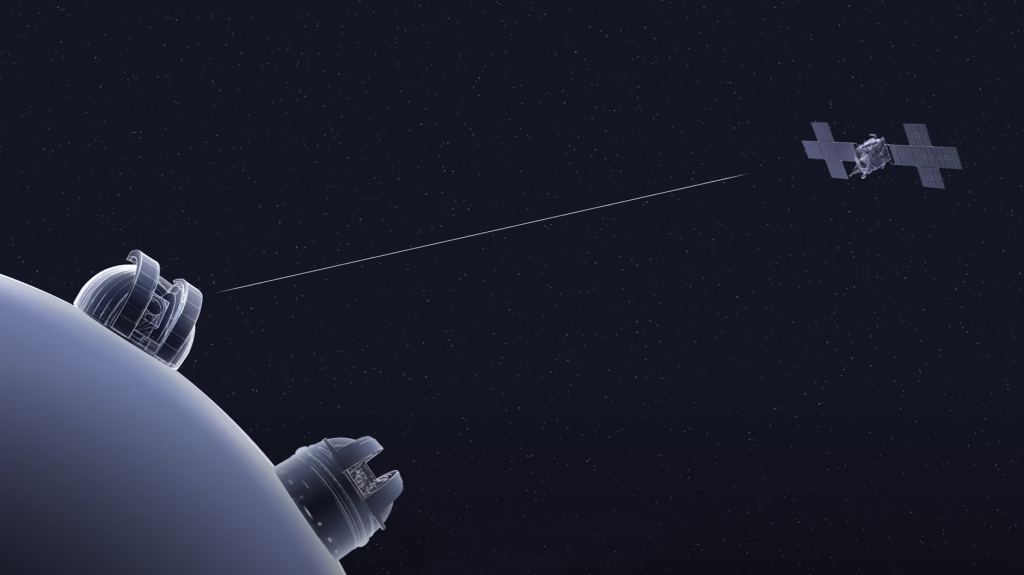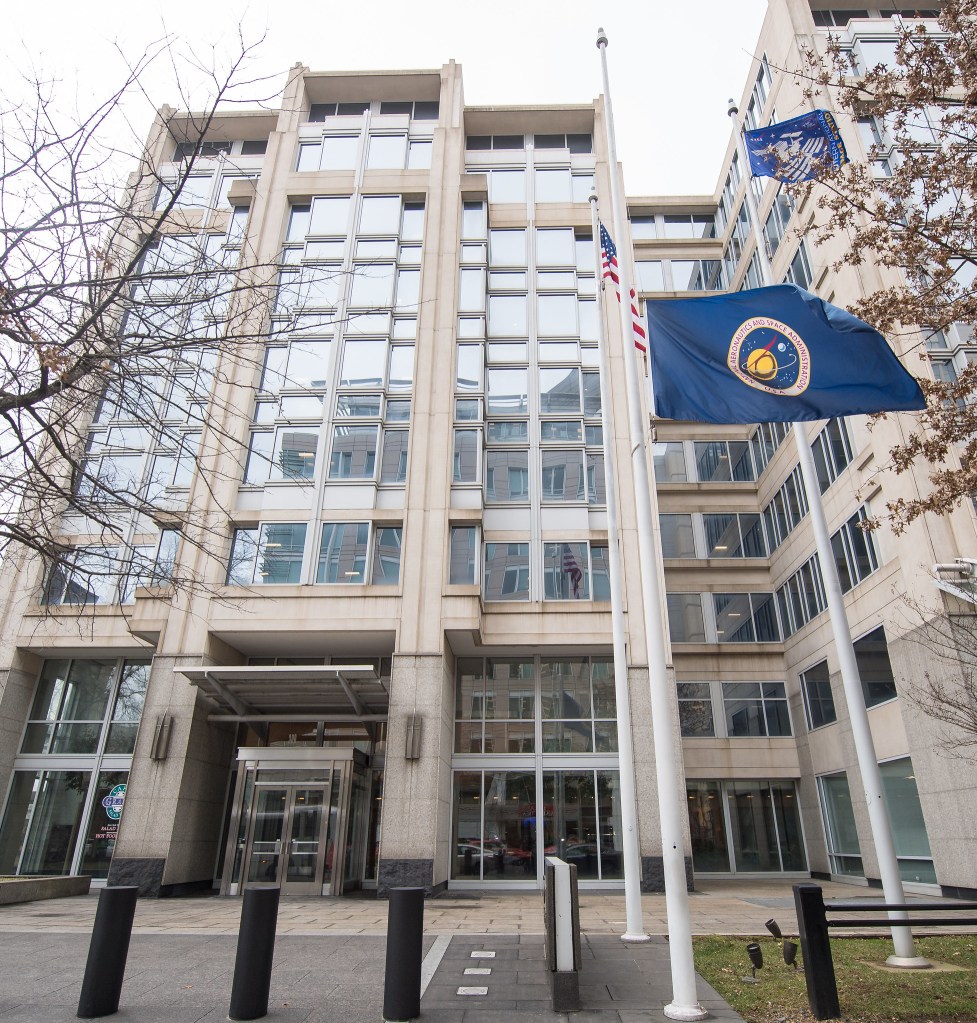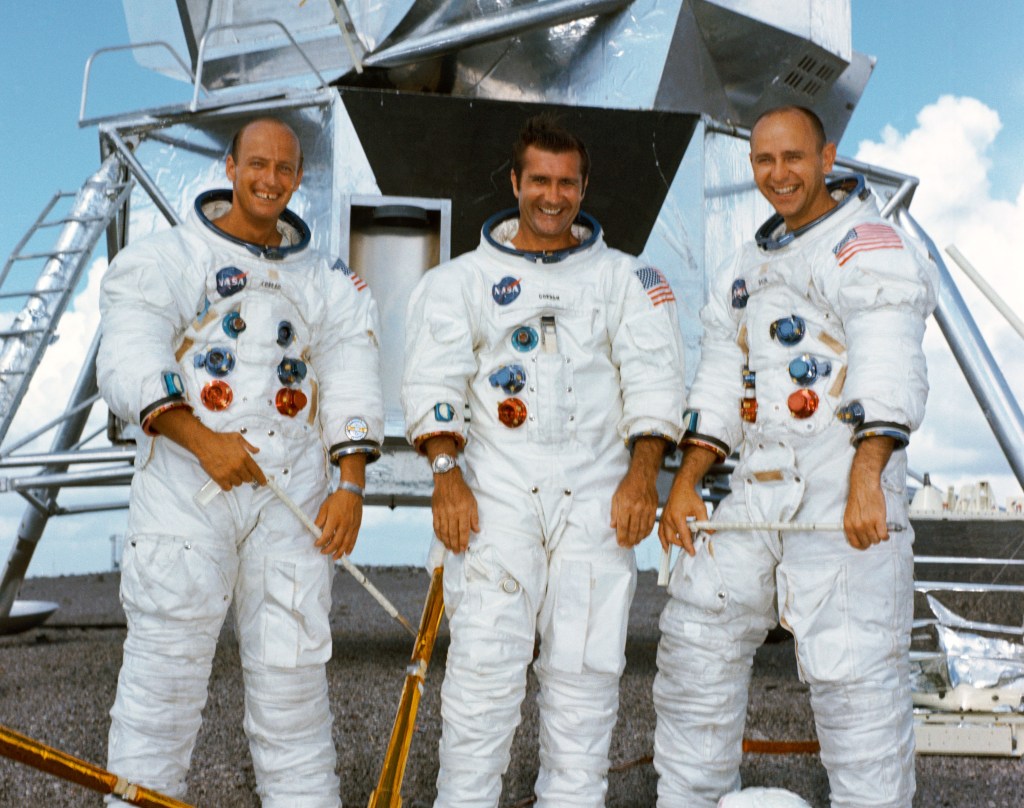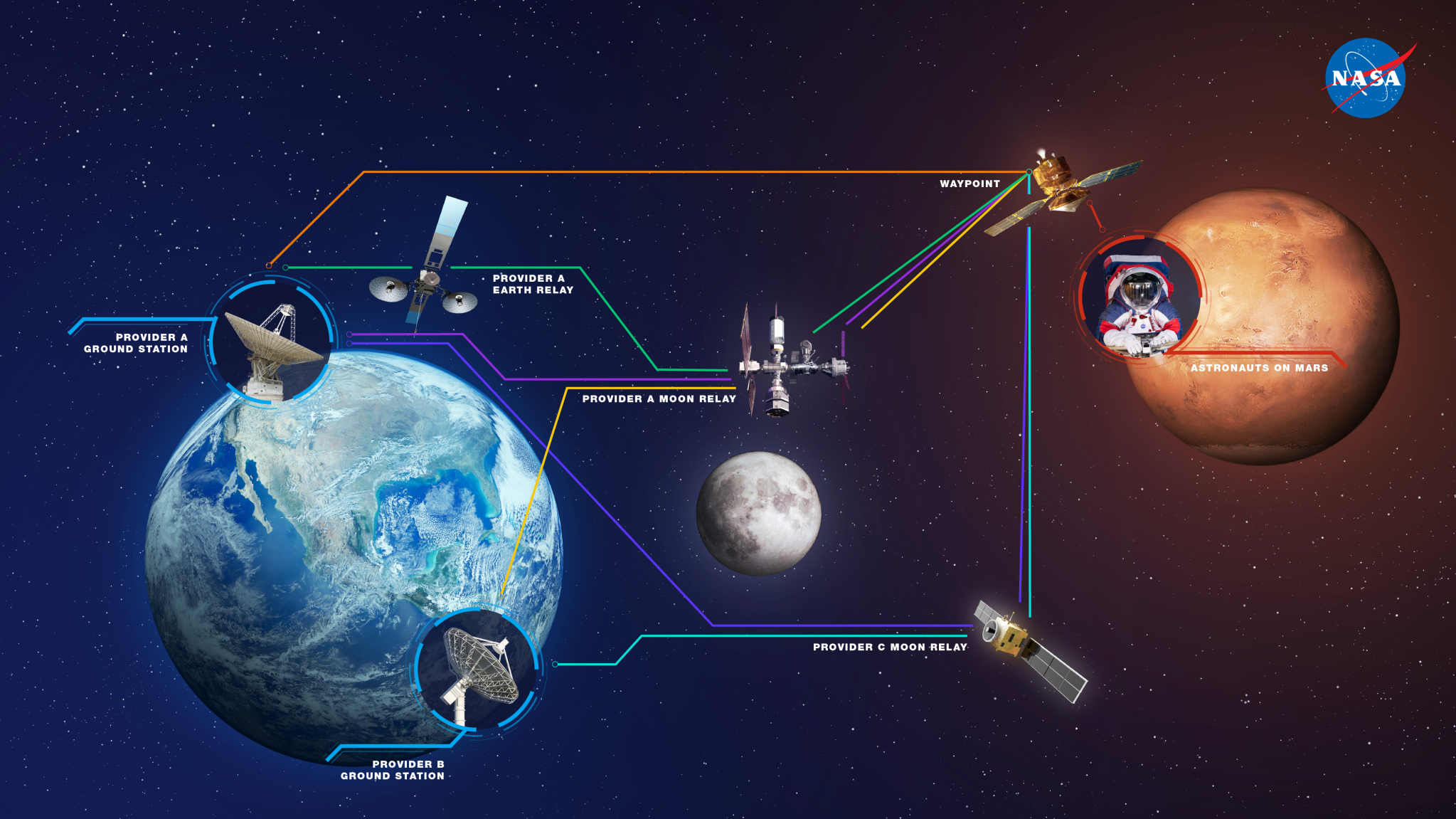What is Delay/Disruption Tolerant Networking?
Delay/Disruption Tolerant Networking (DTN) is a suite of standard protocols that use information within the data stream (headers attached to data units) to accomplish end-to-end data delivery through network nodes. DTN enables data delivery in situations that involve
- Disconnections (e.g., end-to-end link unavailability)
- Delays (e.g., Deep Space missions)
- Data rate mismatches (e.g., high data rate Science downlinks but lower rate terrestrial connections)
A DTN architecture is a store-and-forward communications architecture in which source nodes send DTN bundles through a network to destination nodes.
How Does DTN Work?
The DTN protocol suite can operate in tandem with the terrestrial IP suite or it can operate independently. DTN provides assured delivery of data using automatic store-and-forward mechanisms. Each data packet that is received is forwarded immediately if possible, but stored for future transmission if forwarding is not currently possible but is expected to be possible in the future. As a result, only the next hop needs to be available when using DTN.
The DTN suite also contains network management, security, routing and quality-of-service capabilities, which are similar to the capabilities provided by the terrestrial Internet suite.
- Improved Operations and Situational Awareness: The DTN store-and-forward mechanism along with automatic retransmission provides more insight into events during communication outages that occur as result of relay or ground station handovers and poor atmospheric conditions, and significantly reduces the need to schedule ground stations to send or receive data, which can sometimes require up to five days of planning before a transmission takes place.
- Interoperability and Reuse: A standardized DTN protocol suite enables interoperability of ground stations and spacecraft operated by any space agency or private entity with space assets. It also allows NASA to use the same communication protocols for future missions (low-Earth orbit, near-Earth orbit or deep space).
- Space Link Efficiency, Utilization and Robustness: DTN enables more reliable and efficient data transmissions resulting in more usable bandwidth. DTN also improves link reliability by having multiple network paths and assets for potential communication hops.
- Security: The DTN Bundle Protocol Security allows for integrity checks, authentication and encryption, even on links where not previously used.
Why Develop DTN?
The Consultative Committee for Space Data Systems (CCSDS) has other specifications that individually implement some aspects of the network and transport-layer services that DTN provides, but none of them provide the flexibility or automated data transfer that DTN does. For example: DTN provides a general-purpose network-/transport-layer service that is logically similar to what TCP/IP provides for the terrestrial Internet, but suitable for use in the space environment. In addition to the basic store-and-forward internetworking service, DTN also provides: efficient reliability; security; in-order delivery; duplicate suppression; class of service (prioritization); remote management; a ‘DVR-like’ streaming service, rate buffering, and data accounting, all over possibly asymmetric and time-disjoint paths. Multiple applications including file transfer, messaging (e.g. for mission operations), and streaming audio/video can all be implemented on top of DTN and leverage its services to reduce risk, cost, and complexity.
- Space Packet Protocol: The Space Packet Protocol provides a self-delimited unit of information that is commonly used by missions to encapsulate application-level data from their spacecraft subsystems and instruments. Space packets contain application identifiers (APIDs) which are specific to each mission deployment, and are used to differentiate between different sources or destinations of information. However, no provisions are made for addressing the scheduled nature of connectivity, nor does the space packet protocol support any of the DTN capabilities listed above (beyond a simple unreliable data transport).
- CCSDS File Delivery Protocol (CFDP): The CCSDS File Delivery Protocol (CFDP) provided with ION is a protocol for transmission of files from any DTN node to any other DTN node, and it provides for directory operations such as specifying file names, remote directory listing and specification of destination directories. By relying upon the BP and DTN’s underlying reliability mechanisms, ION CFDP provides end-to-end reliability, store and forward mechanisms through the DTN Bundle Protocol, and is a more efficient and more versatile implementation of CFDP than was the classic stand-alone protocol implementation. The ION implementation provides for feedback to the sender that the file was successfully received at the ultimate destination.
How Is NASA Infusing DTN across Its Communications Networks?
The Space Communications and Navigation (SCaN) program is using a three-phased approach to deploy DTN-enabled operational communications support across the SCaN Network. Its Initial Operating Capability (IOC) is expected in 2021, to support the upcoming DTN users PACE (via the NSN) and KPLO (via the DSN).
DTN Background
- Introduction to Delay/Disruption Tolerant Networking (DTN)
- “The Benefits of Delay/Disruption Tolerant Networking (DTN) for Future NASA Science Missions”
- Presented at the 70th International Astronautical Congress. Summarizes the results of a NASA Science Mission Directorate (SMD) study that identified and verified the benefits that various types of SMD missions would realize by implementing DTN.
- “Delay/Disruption Tolerant Networking for the International Space Station (ISS)”
- Explains the architecture of the ISS DTN network, the operational support for the system, the results from integrated ground testing, and the future work for DTN expansion
- Antarctic Selfie’s Journey to Space via Disruption Tolerant Networking
- Describes the use of DTN across multiple nodes to relay data to the International Space Station from one of the most remote locations on Earth
- Rationale, Scenarios, and Requirements for DTN in Space
- Contains background and explanatory material to support CCSDS Recommendations for a Delay-Tolerant Networking protocol suite. Describes the rationale, scenarios/use cases, and requirements for a proposed DTN service targeted at the space internetworking environment
- Delay and Disruption Tolerant Networks: A Tutorial
- Provides an overview of the DTN concept, the mechanisms and procedure it employs, how it compares to Internet Protocol, and applications of the technology (Developed by Forrest Warthman, Warthman Associates for the InterPlanetary Networking Special Interest Group
DTN Myths and Facts
Myth: DTN increases the speed of data delivery on an individual link.
Fact: DTN may reduce end-to-end latency by allowing more efficient use of available links.
Myth: DTN requires additional link hardware because all missions will be required to be relay nodes.
Fact: DTN does not require missions to be relays, nor does it require new hardware. DTN decouples flight/ground applications from link hardware and infrastructure.
Myth: DTN changes how radio frequency (RF) links are scheduled.
Fact: Links still need to be pre-established.
Myth: DTN is only of value for Deep Space missions.
Fact: Many mission types benefit from reuse, standardization, and networking provided by DTN.
Myth: DTN requires the addition of intermediate nodes to a mission’s data delivery architecture.
Fact: DTN does not mandate the use of intermediate nodes.
Myth: All missions have the same data delivery requirements.
Fact: Mission science is not always severely impacted by loss of data. Onboard storage is becoming less of a cost driver.






